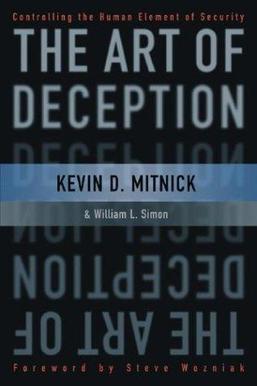Synopsis
At the time of my reading, The Art of Deception was 18 years old. It was published in 2001 and covered the career of a hacker that spanned from from the 80’s to the turn of the millennium. As such, much of the information on specific technologies and tactics are painfully out of date. But with that said, the purpose of this book was not to teach people how to write a mainframe code, it is to teach you how to use deception as part of your hacking toolkit. In that regard, this book is timeless.
The book is organized into about 20 anecdotes, each demonstrating a different tactic or imparting a key issue with the way humans hand their information. It shows you that not all hackers sit behind a screen alone using their programming skills to cause havoc. Some cause havoc in person using more analog methods.
My Reaction
While I did enjoy reading about these anecdotes, I feel like these chapters would be better in a blog or a series of social media posts. That said, each one did touch on a very real issue of the time such as phone phreaking, dumpster diving for credentials, and working you way into places you shouldn’t be allowed. The age of the book makes finding those real issues a bit of a drag, but I feel it is worth while to stick with it to the end.
Recommendation
This novel will not teach you how to be a hacker, but it may open your eyes into aspects you previously had not considers. I do count this as mandatory reading for cyber security professionals, but I wouldn’t be upset it if were lower on your list.

Suitable for:
IT Professionals
★★★☆☆
Software Developers
★★☆☆☆
Security Analysts
★★★★☆
Security Engineers
★★★☆☆
Security Operators
★★★★☆
CISO / CIOs
★★★☆☆
Other Executives
★★★☆☆
My Rating
★★★★☆
Amazon Rating
★★★★⯪
Goodreads Rating
★★★★☆

0 Comments